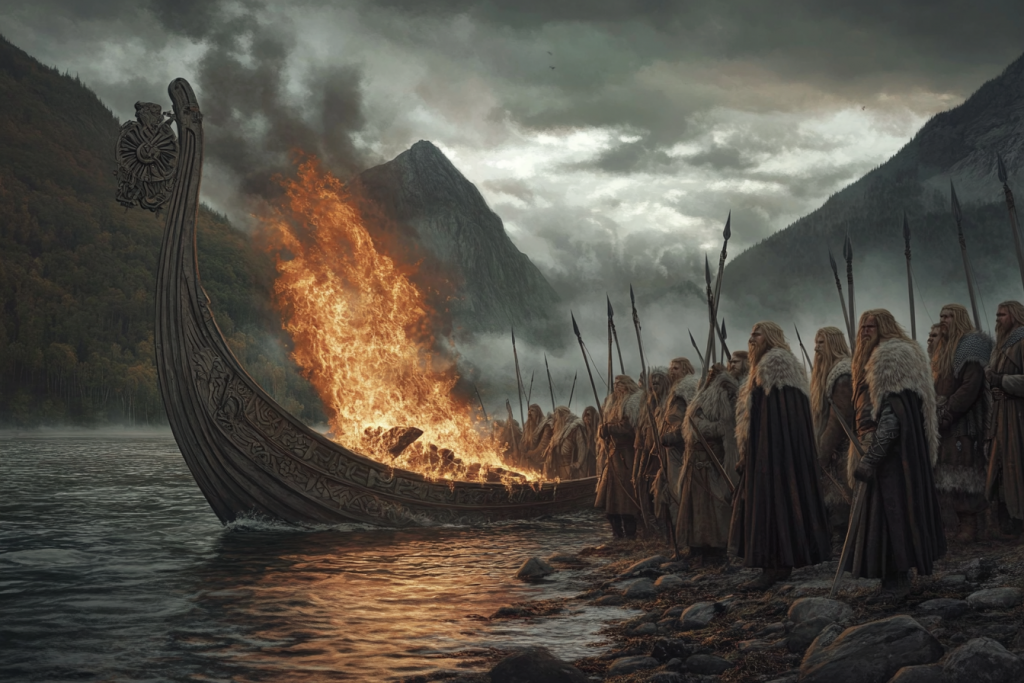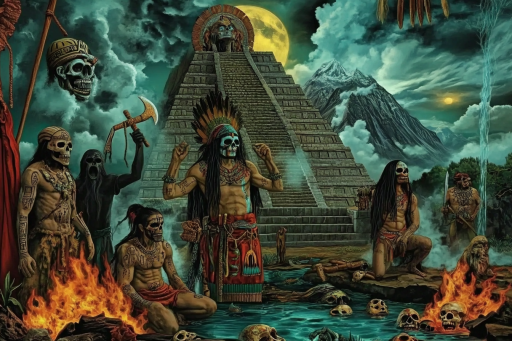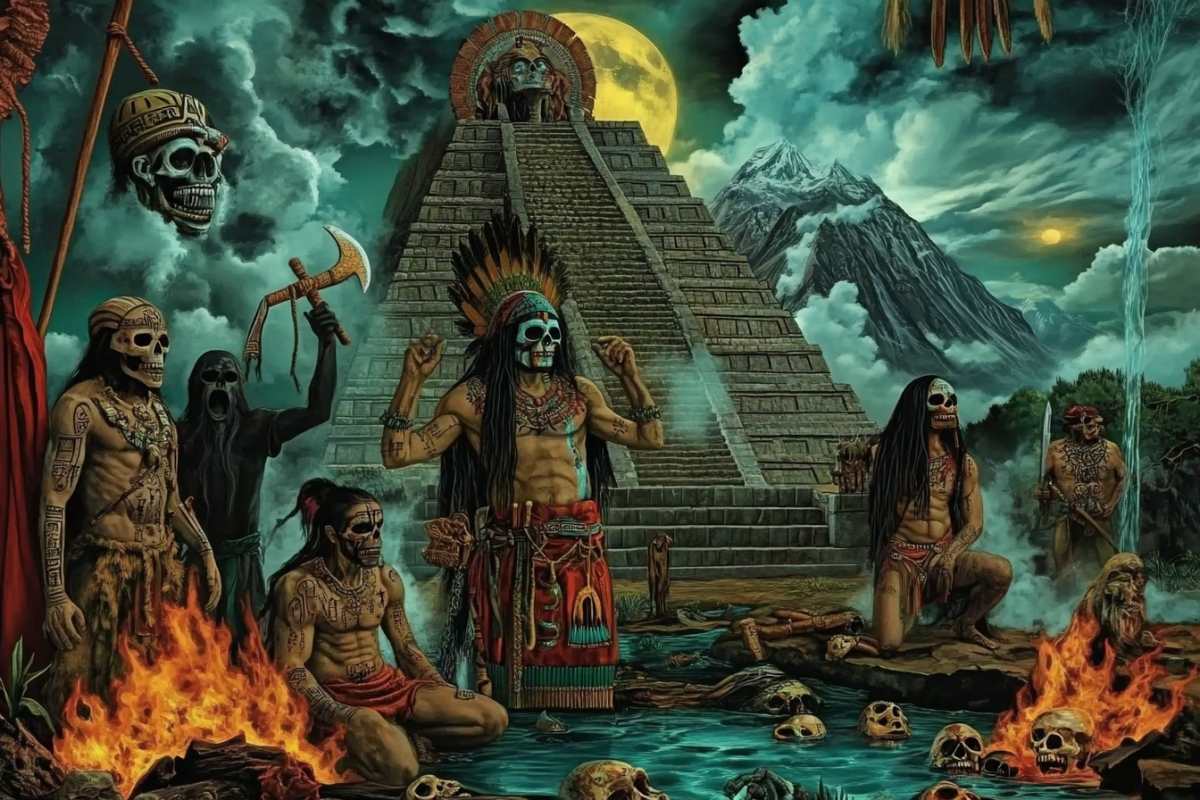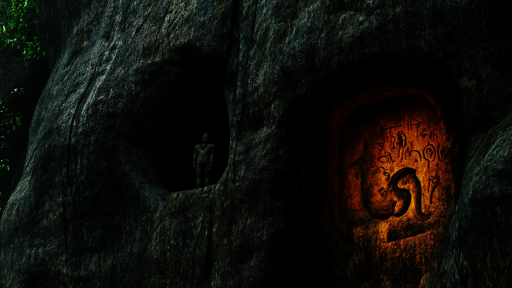
Ancient cultures practiced rituals that might seem shocking, mysterious, or even terrifying by modern standards. Some were performed to honor the gods, others to ensure prosperity, and a few were designed to test the limits of human endurance. These ceremonies often reveal hidden aspects of civilizations long gone, offering a glimpse into beliefs that shaped history. How many of these traditions still influence the world today in ways we don’t realize?
The Firewalking Ritual – Testing the Limits of Faith and Strength

In cultures from India to Polynesia, firewalking has been a test of spiritual strength for centuries. Participants walk barefoot across burning embers without injury, believing their faith and mental focus will protect them. Scientists suggest that proper pacing and technique prevent burns, but believers see it as proof of divine favor. Whether mystical or scientific, this ritual remains a dramatic test of endurance.
The Maya Bloodletting Ceremony – Offering Life to the Gods

The Maya believed that human blood was the most sacred offering to the gods. Rulers and priests performed elaborate bloodletting rituals by piercing their tongues, ears, or even genitals with obsidian blades or stingray spines. The spilled blood was then burned, with the rising smoke believed to carry their prayers to the heavens. These extreme acts of devotion were seen as essential for maintaining cosmic balance.
The Sati Ritual – A Widow’s Fiery Sacrifice

In parts of ancient India, the practice of sati involved widows voluntarily—or forcibly—throwing themselves onto their husband’s funeral pyre. This act was believed to ensure eternal unity in the afterlife and purify the widow’s soul. Though outlawed in the 19th century, some isolated cases persisted well into modern times. The ritual remains one of history’s most controversial practices.
The Viking Funeral – A Fiery Voyage to Valhalla

For fallen Viking warriors, death was just the beginning of their journey to Valhalla. Some funerals involved setting a ship ablaze and sending it out to sea, symbolizing the warrior’s passage to the afterlife. In other cases, slaves or concubines were sacrificed to accompany their lord in the next world. Archaeological finds suggest that Viking funerals were as grand as the legends that surround them.
The Sky Burial – Feeding the Sacred Vultures

In Tibetan and Mongolian traditions, the dead were not buried but left on mountaintops to be devoured by vultures. This ritual, known as jhator, was based on the belief that the body is just an empty vessel after death, and feeding it to scavengers was an act of compassion. The practice continues in some remote regions today, reflecting a unique approach to the cycle of life and death.
The Scalp Dance – A Warrior’s Ritual of Power

For many Native American tribes, scalping was more than an act of war—it was a spiritual ceremony. Victorious warriors performed scalp dances, believing that taking an enemy’s scalp transferred their strength and courage. Some scalps were preserved as trophies or used in rituals meant to honor fallen warriors. The practice, while brutal, was deeply woven into the warrior culture of the time.
The Bullet Ant Glove – A Painful Path to Manhood

The Satere-Mawe tribe of the Amazon has one of the most agonizing initiation rituals in the world. Boys proving their strength must wear woven gloves filled with bullet ants—whose sting is likened to being shot—while performing a ceremonial dance. The young men must endure this torture multiple times before being considered true warriors. The excruciating pain is seen as a path to adulthood and strength.
The Cannibalistic Funerals of the Aghori

The Aghori sect of India believes that nothing is truly impure, including the dead. As part of their spiritual journey, some Aghori consume human flesh taken from corpses found along the Ganges River. This ritual is meant to challenge the boundaries of mortality and connect them to the divine. Though rare and controversial, these practices are part of their extreme path to enlightenment.
The Self-Mummification of the Sokushinbutsu Monks

Some Buddhist monks in Japan took devotion to extreme levels by undergoing a process of self-mummification. Over several years, they followed a strict diet of tree bark and poisonous nuts to eliminate body fat, then entered a tomb and meditated until death. Those who successfully mummified were revered as living Buddhas. This ritual, now banned, remains one of the most extreme acts of religious devotion.
The Mandan Okipa Ceremony – A Ritual of Pain and Endurance

The Mandan people of North America practiced a brutal coming-of-age ritual known as the Okipa. Young warriors were suspended from wooden hooks pierced through their skin, enduring hours of intense pain without showing emotion. The ordeal symbolized strength, honor, and spiritual awakening. Though long abolished, it remains one of the most extreme indigenous initiation rites ever recorded.
The Famadihana – Dancing With the Dead

In Madagascar, families periodically exhume their ancestors’ remains, wrap them in fresh cloth, and dance with the corpses before reburying them. This ritual, called Famadihana, is meant to celebrate the dead and strengthen ties between the living and their ancestors. Though unusual to outsiders, it is seen as a joyous event honoring family heritage.
The Aztec Heart Extraction – A Brutal Offering to the Gods

The Aztecs believed the gods required human hearts to keep the world in balance. Victims—often prisoners of war—were taken to the top of a temple where priests cut out their still-beating hearts as a sacrifice. The ritual was meant to ensure good harvests, victory in battle, and cosmic stability. Archaeological evidence suggests that thousands were sacrificed in a single day at times.
The Foot Binding Tradition – Beauty Through Pain

For centuries in China, young girls had their feet painfully bound to achieve the ideal of “lotus feet.” Their toes were broken and wrapped tightly to prevent growth, leaving them with tiny, deformed feet that symbolized beauty and high status. Though banned in the early 20th century, some elderly women today still bear the painful marks of this once widespread practice.
What Do These Rituals Say About Us?

Human history is filled with extreme traditions that might seem unthinkable today, yet they were once sacred, honorable, or even necessary. These rituals reveal the lengths people would go to honor their gods, protect their beliefs, or prove their worth. If these customs shaped ancient civilizations, what practices do we follow today that future generations might see as equally shocking? Perhaps history is still being written in ways we don’t yet understand.





